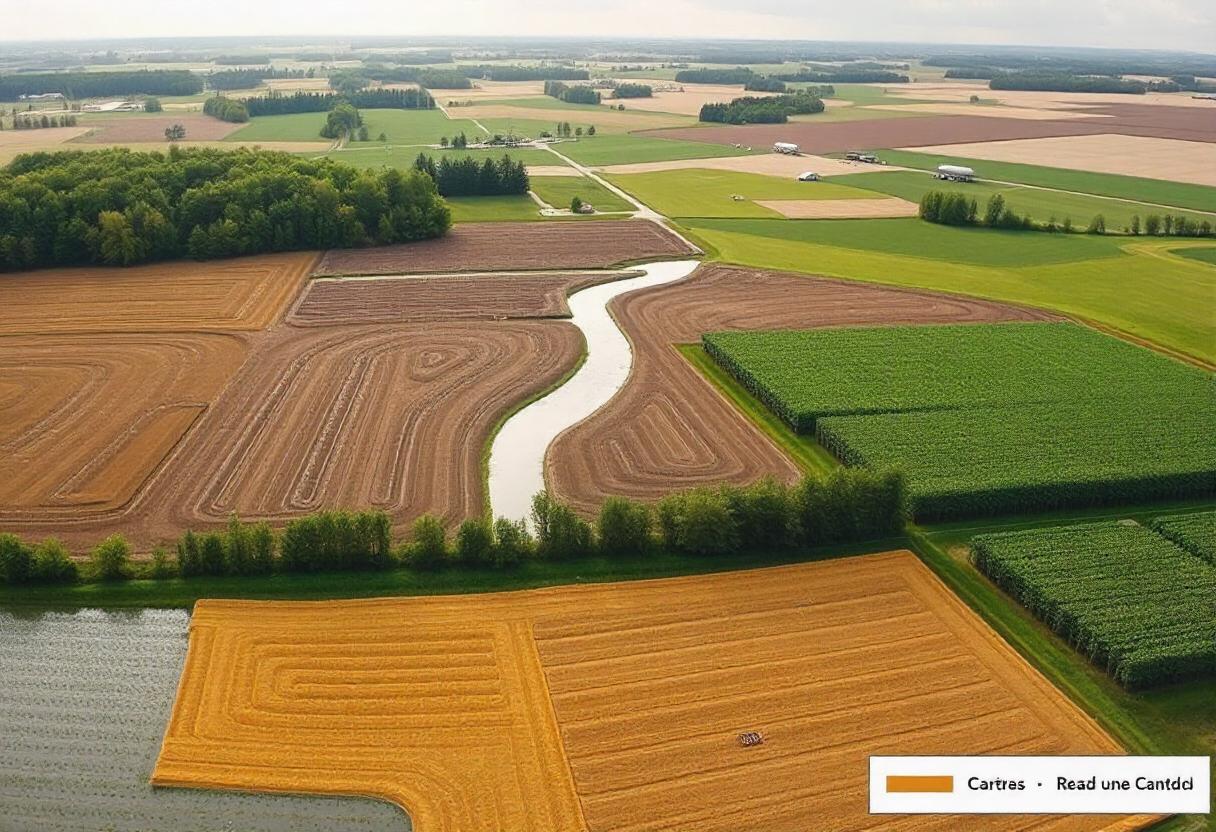
Ontario is one of Canada’s most agriculturally diverse provinces, with its farming industry benefiting from a variety of agricultural zones. These zones are determined primarily by the region’s climate, soil composition, and topography, which influence the types of crops that can be grown and the methods used in farming. Understanding Ontario’s agricultural zones is key to optimizing crop selection and farming practices.
Ontario’s Climate and Growing Zones
Ontario’s agriculture zones are largely influenced by the province’s climate. The growing season, frost dates, and temperature fluctuations are critical factors in defining these zones. Agriculture and Agri-Food Canada developed a plant hardiness zone map that divides the province into different regions based on their climate conditions. The zones range from 0a in the north, where winters are long and cold, to 7a in the southernmost parts of Ontario, where the climate is milder, allowing for a more diverse range of crops.
- Zone 5b to 7a (Southern Ontario): This area, including regions like Niagara, Windsor, and Toronto, experiences the warmest temperatures in Ontario. The moderate climate, fertile soils, and proximity to the Great Lakes create ideal conditions for a variety of crops, including tender fruits like peaches, cherries, and grapes, as well as vegetables, corn, and soybeans.
- Zone 4a to 5a (Eastern Ontario): In areas like Ottawa, Kingston, and Peterborough, the climate is slightly cooler but still supports the growth of grains, corn, and root vegetables like carrots and potatoes. This zone is known for dairy farming and livestock production as well.
- Zone 2a to 4a (Northern Ontario): Northern Ontario, including regions like Thunder Bay and Timmins, faces shorter growing seasons and cooler temperatures. However, hardy crops like barley, oats, and cold-tolerant vegetables can still thrive here. Agricultural activity in this zone is often focused on livestock and forestry, though there are pockets of innovative farming practices adapting to the colder climate.
Soil Types and Agriculture in Ontario
Ontario’s diverse soil types further divide its agricultural zones. The province has a mixture of fertile loamy soils, sandy soils, and heavy clay soils, each supporting different types of farming.
- Loamy Soil (Southern Ontario): Loamy soils, which are prevalent in Southern Ontario, especially in areas like the Niagara Peninsula, provide the perfect balance of moisture retention and drainage, making them ideal for fruit production and row crops like soybeans and corn.
- Clay Soil (Eastern and Central Ontario): In areas such as Hamilton, Guelph, and eastern parts of Ontario, heavier clay soils are common. While clay can retain nutrients well, it is prone to waterlogging, requiring farmers to implement drainage techniques. Despite this, crops like hay, grains, and oilseeds thrive in these regions.
- Sandy Soil (Southwestern Ontario): Southwestern Ontario, particularly in counties like Norfolk, has more sandy soil, which is well-suited for growing tobacco, ginseng, and some vegetables. Sandy soils drain quickly, so irrigation and careful management of water are important for success in these areas.
Topography and Agriculture Practices
Ontario’s topography is varied, from the flat plains of southern Ontario to the rolling hills of central Ontario and the rugged landscapes of the north. This variation has led to the development of different farming techniques suited to each area’s terrain.
- Flat Plains (Southern Ontario): In the southern agricultural zones, flat or gently sloping plains make it possible for large-scale commercial farming. This includes growing grains, oilseeds, and vegetables using advanced mechanized farming techniques.
- Rolling Hills (Central and Eastern Ontario): In central and eastern Ontario, where the land is more uneven, smaller farms dominate. The undulating landscape can make large-scale farming more challenging, but mixed farming practices, including crop rotation and livestock raising, are commonly used.
Adapting to Ontario’s Agricultural Zones
Ontario’s farmers continuously adapt to the conditions of their agricultural zones, utilizing modern technology and practices such as irrigation, greenhouse farming, and controlled environment agriculture.